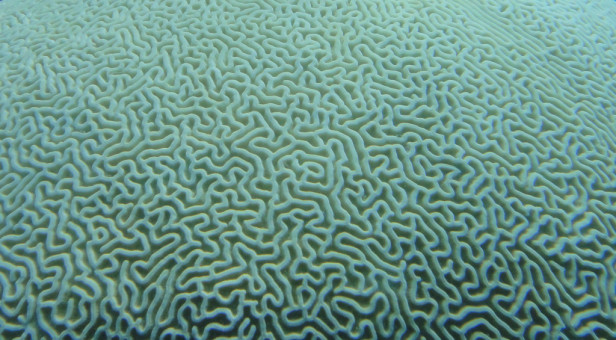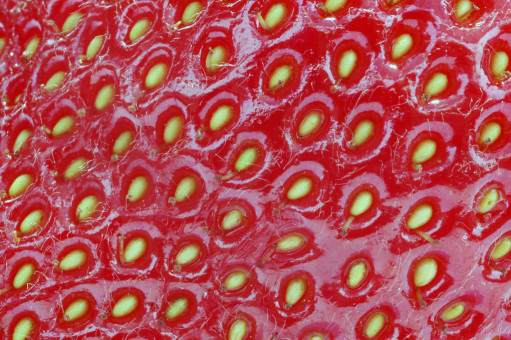
1. Student Orientation to the Course
By shaping the human built world we all live in, engineering exerts a profound influence on our world and on our personal experience of life. The first lesson of the curriculum simply uses students’ immediate physical surroundings to tangibly emphasize the pervasive and pronounced impact of engineering on our lives. Then, to bring the point home in a tactile and concrete way, students physically deconstruct and examine in detail a common technological device.

2. Introduction to Engineering Inspired by Nature
Nature-inspired engineering innovation is bristling with hundreds of exciting real-world examples, from gecko-based devices allowing humans to literally scale glass walls, to energy-free cell phone screens, bright as the butterflies that inspired them. This lesson plan gives students an engaging introduction to the topic and fills them with anticipation for the rest of the course.

3. Fracture Mechanics: physical design from the ground up
As a broad and comprehensive introduction to engineering, this course starts by exploring the basis of all physical design: materials. Failures in materials are responsible for many dramatic examples of catastrophes in human history, stories of which capture student interest as a springboard to exploring fundamental material science and structural engineering concepts. Using a variety of simple activities, students begin examining and thinking about basic mechanical properties of materials and their role in engineering. Specifically, students use the photoelastic effect to examine and compare tensile stress in unnotched, notched, and quarter-circle transitioned fillet material samples, a perfect set-up for the revelations of the next lesson.

4. The Tutelage of Trees
As material scientist Dr. Christopher Viney once put it: “Nature is full of solutions looking for problems to solve.” Engineers have now come to realize, for example, that fundamental improvements in basic material design can be inspired by how everyday trees manage mechanical forces. The implications effect nearly everything humans make, from automotive design to skyscrapers. Examining the curvature patterns of trees in the schoolyard, students physically model these geometries, and use the photoelastic effect and cell phones to test tensile forces through conventional and tree-inspired material structures.

5. Enlightened by Bones
Nothing beats the optimized strength-to-weight ratio of bones, which reshape themselves in response to mechanical loading in real time. Computer-aided design (CAD) software used by professional engineers now employs these same ideas, and in this lesson, students redesign everyday products using bone-inspired design principles to generate more materially-efficient design solutions.

6. The Architectural Genius of Nature’s Materials
Using images from electron-beam microscopes, students peer deep inside the microscopic world of natural materials to appreciate their exquisite structure, how this structure confers superlative performance qualities, and how learning from the architecture of natural materials can help us improve our own.

7. Brainy Coral
We may think of carbon dioxide as a pollutant, but to the rest of Nature it’s a building block. Corals build themselves out of it, making a concrete material for the same reason we do: it’s a strong, easily-shaped structural material. Now, by borrowing the chemical process coral reefs use, people have discovered a revolutionary way of making concrete without quarries and literally out of thin air, cleaning the skies of CO2 in the process. In this lesson, students become chemical engineers, derive the same coral-inspired chemical process as used commercially, and then literally convert car exhaust into cement right in the classroom.

8. The Largesse of Leaves
While conventional solar cells produce clean energy, the production of the panels themselves is problematic: silicon-based panel material must be mined and cooked at high temperatures, a process that results in toxins, pollutants, and quarries. Fortunately, an alternative model for successful cell design exists all around us, in the green material produced by plants through one of Nature’s most successful and impactful technologies: photosynthesis. Plants serve as the basis for a commercially-successful form of solar cell with low-embodied energy and toxins, which students fabricate together in class.

9. The Acumen of Ants
In recent years computer scientists have come to realize that many other species have developed powerful algorithms for successfully solving complicated problems, such as finding food in ever-changing physical environments. In this lesson, students come to understand the essence of computer programming by testing conventional search algorithms against innovative software inspired by ants, now used around the world in distribution networks and manufacturing operations.

10. Exploring Nature’s Functional Designs
What makes the difference between someone who walks by a tree every day, and someone who sees the same tree and stops, finding inspiration for a new kind of solar cell there? Or a revolutionary irrigation pump? Or a stronger synthetic material? The difference is not in the person, it’s in how that person has been taught to see the natural world. Engineers inspired by Nature see the living world as one full of capacity, full of design, and full of applicability to human engineering efforts. Students in this lesson participate in activities to see the world the way engineers inspired by Nature do… and never to see the natural world the same way again.

11. Discovering Nature’s Talents: Focus on Health
What do new antidotes to snake venoms inspired by peacocks, medicines against human parasites inspired by chimpanzees, and deterrents to flies inspired by zebras have in common? Each species inspiring the medical innovation is exposed to these respective threats as part of their daily lives, and has evolved solutions to manage these dangers that can spur human technological innovation. Here students work in teams, learning to use the same thinking skills professional bio-inspired engineers use to generate hypotheses for health-related innovations, and present their ideas to the class.

12. Creature Feature
Look outside your window: right outside your door are hundreds of species waiting to inspire the next big thing. In this lesson, students research a local organism, select one of its impressive functional attributes, and make a presentation to the class about a possible technological application this attribute inspires.

13. The Council of Mycelium
Here students explore the engineering and design implications of Life’s most well-known feature: biodegradability and unlimited recycling. We take it for granted, but it’s an extraordinary system: for every molecule assembled in the natural world, Nature also produces an enzyme which can break it down. To bring these concepts down to Earth, students conduct comparison tests of polystyrene and mushroom-based packaging materials, in a bio-inspired variation of the classic egg-drop activity.

14. Decoding Technological Challenges
Inventors get lucky sometimes, but they don’t wait around hoping for inspiration. So how do bio-inspired engineers come up with their amazing ideas, anyway? In this section of the curriculum, students begin to learn the methodical process bio-inspired engineers use every day to generate and pursue their extraordinary innovations.

15. Ascendant Cities
Why is the size of the human population so hard on the environment, when other species like ants, who have even more individuals than we do (and a higher biomass), are considered good for the planet? Questions like these are even more pertinent to the next generation, who will live in a world where the human population is likely to balloon past 10 billion in their lifetimes. In this lesson, students borrow architectural and urban planning ideas from other species to design a bio-inspired city capable of housing millions of people in a thriving, biodiverse world, and then compare aspects of their design quantitatively to that of a more conventionally designed metropolis.

16. The Wonderful World of Analogical Problem Solving
Researchers at the Georgia Institute of Technology studied the physical dynamics of how dogs shed water from their bodies, discovering an underlying mathematical principle that could improve the spin cycle in laundry dryers. Bio-inspired engineering is full of delightful analogies like this, between human technological goals and the often overlooked and underappreciated capabilities of the living world. At the core of bio-inspired engineering, analogical problem solving forms the focus of this lesson, explored through mental thought games and activities.

17. Abstracting Design Principles from Biological Models
For over a thousand years, humans tried to fly by copying birds with various flapping contraptions before Sir George Cayley shifted focus to how birds glide, giving the Wright Brothers a giant’s shoulders to stand on. Key to the successful process of bio-inspired engineering is being able to abstract the relevant design features from biological models. In this lesson, students get to practice the art.

18. Applying Nature’s Design Principles to Technological Innovations
Whether you’re generating a design concept or doing physical prototyping, taking ideas the natural world has inspired in you and using them to shape your inventions is an exciting, creative step in the bio-inspired engineering process. This lesson looks at early prototypes of the Apple computer, I-phone, GoPro camera and other well-known technologies, as well as bio-inspired designs developed by other students, to get students thinking and provide teachers an occasion to clarify what level of work is expected for their final project.

19. Ensuring and Evaluating Success
What exactly is it about the natural world that has allowed it to persist for 3.8 billion years? And what can we learn from Nature to make our own engineering efforts more sustainable? Students in this lesson explore the seemingly abstract and complex concept of sustainability, but through a clear, concise, concrete hands-on activity, and a tool that will prove useful for evaluating their own final projects.

20. Final Projects
The course culminates in a capstone project in which students use the bio-inspired engineering process on a technological challenge of their own choosing. This seals the deal: after being amazed all semester by Nature’s ingeniousness, students get to see how powerful and useful bio-inspired innovation is by applying its methodologies to a challenge of personal interest. Nothing secures student impact like learning a new skill and applying it successfully towards something one cares about. As one high school student put it: “This was a fantastic course. I learned a lot and am now really inspired to follow along this path. The final project gave me a new goal in life.”






